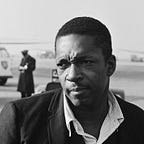A Myriad of Form(s)
Word: Beyond Formulated Language
Monthly Prompt No9:December — Haiku
Definition
The haiku is a Japanese poetic form that consists of three lines, with five syllables in the first line, seven in the second, and five in the third, traditionally evoking images of the natural world. The form expresses much and suggests more in the fewest possible words.
History
Haiku began in thirteenth-century Japan as the opening phrase of renga, an oral poem, generally a hundred stanzas long, which was also composed syllabically. The much shorter haiku broke away from renga in the sixteenth century and was mastered a century later by Matsuo Basho. Not popularized in Western literature until the early 1900s, it served to begin a longer poem by establishing a season, often with a pair of seasonal images. Unlike the rest of the collaboratively composed renga sequence, the hokku — or the opening three lines of a longer poem known as a tanka — was often created by a single poet working alone, and was subsequently used as an exercise for students. Over time, the hokku began to be appreciated for its own worth and became distinct as a poetic form.
Despite its formal history, the haiku’s composition has expanded somewhat over time. As the form has…
